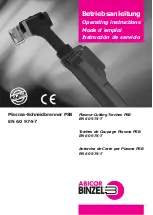
6
To install the siren, please follow the steps, as described below:
1. Select the point where you will mount the siren, which should be as high as possible so that
the siren is easily visible and safe.
2. Align the siren mount to the wall,with the built-in spirit level, mark the fixing holes and open
them with a drill.
3. Fix the base of the siren to the wall using the existing brackets.
4. Pass the cable that connects the siren to the panel, from the hole in the siren base. For
greater security, choose the passage of the wire inside the siren to be directly behind this
hole.
5. Connect the siren to the panel, according to the explanation of the connection terminals on
page 5 and the following wiring diagram.
6. When you finish cable connections, connect the battery to the siren. The siren can remain in
this condition until you finish the installation. The siren will start to operate normally only when
supplied with power from the alarm control panel.
Note:
When the power supply is first applied from the panel to the siren, a short sound will be heard
as a confirmation that the siren has been activated.
7. Install the inner cover and screw it in with the four corresponding screws.
8. Close siren’s external cover and fasten it with the corresponding screws.
Attention!
To power the siren from the alarm panel, you must, anyway, use cable 0,5-0,75mm
2
.
A 2x0.50 + 4x0.22 mm
2
cable is recommended.
Installation
Η γραμμή αυτή δεν είναι
απαραίτητο να συνδεθεί.
It is not necessary
to connect this this
wire wire


























